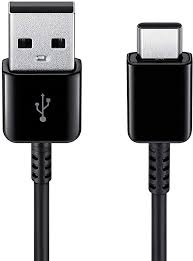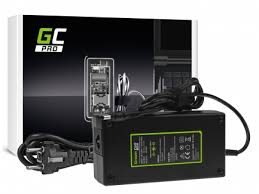Charge your devices quickly and efficiently with the Samsung USB Type-C Charger. Designed for fast charging and reliable performance, this charger is compatible with a wide range of Samsung smartphones, tablets, and other USB-C enabled devices.
Key Features:
-
USB Type-C fast charging support
-
Compatible with Samsung Galaxy series and other USB-C devices
-
Power Output: 15W / 25W / 45W (varies by model)
-
Compact, travel-friendly design
-
Built-in protection against overcharging, overheating, and short-circuiting
-
High-quality USB-C to USB-C cable included (on selected models)
Whether you’re at home, at work, or on the go, this charger keeps your Samsung devices powered up and ready to go.
Key Features of USB Type-C
Reversible Design: The symmetrical connector allows for easy insertion without worrying about orientation.
Wikipedia
High Data Transfer Rates: Supports various USB protocols:
USB 3.2 Gen 2×2: Up to 20 Gbps
USB4: Up to 40 Gbps
Wikipedia
OnLogic
+1
Wikipedia
+1
Power Delivery (PD): Capable of delivering up to 240W (48V, 5A) with the Extended Power Range (EPR) specification, suitable for charging devices from smartphones to laptops.
Wikipedia
+1
Adafruit Learning System
+1
Alternate Modes: Supports transmission of non-USB signals like:
DisplayPort
HDMI
Thunderbolt 3 and 4
PCI Express (PCIe)
Wikipedia
Backward Compatibility: With appropriate adapters or cables, USB-C can interface with older USB standards (e.g., USB-A, USB-B).
WIRED
📏 Technical Specifications
Connector Dimensions: Approximately 8.4 mm × 2.6 mm.
Pin Configuration: 24 pins, including:
Power and Ground
High-Speed Data Lines
Configuration Channels (CC): Manage cable orientation and power roles.
Sideband Use (SBU) Pins: Support alternate modes.
Adafruit Learning System
+5
Wikipedia
+5
Texas Instruments
+5
Texas Instruments
+1
Wikipedia
+1
Cable Capabilities:
Standard Cables: Support up to 3A current (60W).
Enhanced Cables: Support up to 5A current (100W or 240W with EPR).
USB Implementers Forum
+3
Lifewire
+3
BenQ
+3
Adafruit Learning System
🛠️ Applications of USB-C
Charging: Powers devices ranging from smartphones to high-performance laptops.
Data Transfer: Facilitates rapid data exchange between devices like external drives and computers.
Video Output: Connects to monitors and TVs using protocols like DisplayPort or HDMI.
Wikipedia
Audio Transmission: Some devices use USB-C for audio output, replacing traditional 3.5mm jacks.
Peripheral Connectivity: Interfaces with accessories such as docking stations, hubs, and adapters.
⚠️ Considerations When Using USB-C
Cable Quality: Not all USB-C cables support the same features. Ensure cables are certified for desired functionalities like high-speed data transfer or high-wattage charging.
Device Compatibility: While the connector is universal, the supported features (e.g., Thunderbolt, PD) depend on the device’s specifications.
Power Delivery Profiles: Verify that both the charger and device support compatible PD profiles to achieve optimal charging speeds.


